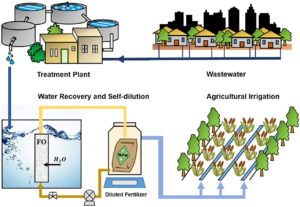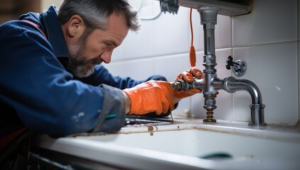Plumbers Stroudsburg PA install, repair, and maintain pipes and fixtures that facilitate water distribution and waste removal in residential and commercial buildings. They must be able to read blueprints and understand complex plumbing systems.
Plumbers often work with customers, so strong customer service skills are important. They must also be able to listen to complaints and provide solutions that are both effective and cost-efficient.

Plumbing is the system of pipes that transports water and waste in homes and businesses. Plumbers install and repair these systems to ensure they function correctly. They must be knowledgeable about a wide range of topics, including pipe fittings, plumbing codes, and construction techniques. Plumbers typically begin their careers by completing an apprenticeship program or vocational school program that provides hands-on training and classroom instruction. After gaining experience in the field, they may decide to pursue additional certifications or licensing.
A plumber’s job duties include inspecting a home or business to determine the best location for pipes and other equipment. They will look at the layout of the space, factor in any existing appliances and fixtures, and then lay out a plan for the new pipes and their locations. During the installation process, they will also make sure that all required permits are obtained and that the work complies with local codes.
Before beginning the actual work, a plumber will put down plastic sheeting to protect the floor and walls. They will then open up the path for the new pipes by removing any drywall or tiles. This can be a messy job, but it is necessary to ensure that the plumbing system will be installed properly. In addition, plumbers need to have access to a variety of tools and materials, such as power drills, soldering equipment, pipe cutters, and professional-grade sealants.
Once the rough-in plumbing is complete, the plumber will connect the pipes to the existing fixtures and test the water flow to ensure everything works properly. This is a crucial step, as any errors during this stage can cause major problems later on. Once they are satisfied that the plumbing system is functioning as intended, the plumber will seal up the holes and clean up their work area.
There are several different types of plumbers, each with their own specialties. Some plumbers focus on residential plumbing, while others work on commercial or industrial projects. Still others specialize in specific types of plumbing equipment, such as gas systems or steam heating systems. Most states require plumbers to obtain a license before they can practice in the field, and this usually requires passing an exam and meeting certain education or experience requirements. In addition, plumbers must carry liability insurance to protect themselves from property damage and injuries on the job.
Maintenance
Plumbing systems are a vital component of building functionality. Though often overlooked in comparison to electrical and mechanical systems, plumbing failures can be costly and disruptive events that need to be prevented. A plumbing maintenance process allows facility managers to identify and address issues before they become serious problems, keeping buildings running smoothly and efficiently.
The most effective method for reducing the need for costly repairs is through proactive maintenance. The aging and expected useful lives of pipes should be factored into the development of a maintenance schedule. Pipes should be inspected at least annually to ensure that water flow is not compromised. This can be accomplished by creating a maintenance checklist with the more critical systems being inspected and maintained first, followed by less critical areas.
Using an online plumbing management system, such as ClickUp, to create plumbing maintenance checklists is an effective way to keep track of these inspections and tasks. The customizable platform offers a variety of tools to streamline workflow, including the ability to create, customize, and require forms to be filled out by technicians while in the field. This helps to promote accountability and reduce paperwork errors.
Another benefit of a plumbing maintenance program is that it allows facilities to monitor the water usage and costs. By incorporating plumbing into the preventative maintenance process, technicians can inspect water meter readings and look for issues that may be impacting efficiency, such as leaks, clogs, or high water pressure. This can be used to identify areas of concern and determine whether they need to be replaced or rehabilitated.
A plumbing maintenance team can also conduct a thorough cleaning of sewer lines and septic tanks. This can help to reduce the risk of clogs and other plumbing problems caused by tree roots, sewage backups, or other factors.
A plumbing maintenance program is a great investment in the health and longevity of your home’s pipes, water heater, and other fixtures. By following these steps, you can rest assured that your plumbing will continue to function properly and your house will remain safe and comfortable for years to come.
Troubleshooting
When a home plumbing problem occurs, it is important to take prompt action. Otherwise, the problem could worsen and lead to costly repair bills. Many plumbers have experience in troubleshooting and can diagnose issues before they become serious. However, sometimes troubleshooting requires more than just looking at a pipe or faucet. Observing other symptoms in the house can help identify the cause of the problem. These clues can help a homeowner save time and money by preventing unnecessary trips to the plumber.
Leaky pipes are one of the most common plumbing problems. They can cause high water bills, damage wood and masonry, create breeding grounds for bacteria and cockroaches and may lead to expensive repairs. Leaky toilets are also problematic and may cause significant damage to the structure of a home or the surrounding area. This type of problem is easy to fix with some basic tools and the right know-how.
Another common problem is clogged drains. These can be caused by hair, dental floss, food waste or other debris. Depending on the severity, a homeowner can try using a drain snake or plunger. In severe cases, a sewer system backup or septic tank problem might be the culprit. This is a more serious issue that needs to be handled by a professional.
In some instances, a commercial plumbing problem may require the services of a licensed plumber. This can be due to complex issues that involve gas or other specialized equipment. However, many problems can be prevented through regular inspections and maintenance. Promoting responsible use of the plumbing systems in a business can also go a long way toward reducing the need for plumbers. For example, educating employees on what can and cannot be flushed in the toilets can help prevent blockages and other problems. When the unexpected happens, these simple troubleshooting tips can help a business owner get back on track quickly.
Customer Service
Providing superior customer service is key to a plumbing business’s success. Plumbers who prioritize this aspect of their business build trust and loyalty with customers, which ultimately leads to more sales. In addition, plumbers who focus on customer service are more likely to receive positive online reviews that can boost their reputation and grow their business.
Ensure a Positive Customer Experience
When potential clients call a plumber’s office, they expect to speak with an empathetic and friendly team member who can answer their questions and schedule a timely appointment. Using automated call center software like ServiceTitan can help your CSRs answer calls quickly and accurately, and make sure each call is handled in the most efficient manner. It also helps to have plumbing call center scripts on hand so your CSRs can offer the right information to each client over the phone.
Once a plumber has a job scheduled, they should do their best to adhere to the appointment timeline and complete the work in a timely manner. In addition, they should keep the customer updated on any changes to their original estimate and provide transparent cost breakdowns. This enables customers to trust their plumbers and increase satisfaction with the service provided.
A quality customer experience is also important for retaining existing customers and increasing referrals. To do so, plumbers should provide exceptional work, follow up on past jobs, and continuously improve their services by gathering customer feedback. Additionally, they should develop relationships with other professionals and businesses in related industries to increase their customer base.
With the industry experiencing significant growth, there are plenty of opportunities for plumbers to succeed in their businesses. With the proper training and a strong focus on customer service, plumbers can deliver excellent results while building long-lasting relationships with their clients. For more tips and guidance, check out our blog post on transforming your plumbing business into a high-performance organization! If you are ready to take your plumbing business to the next level, schedule a free demo with our team of experts today. We’ll show you how FieldEdge can help you improve customer satisfaction and grow your plumbing business!




